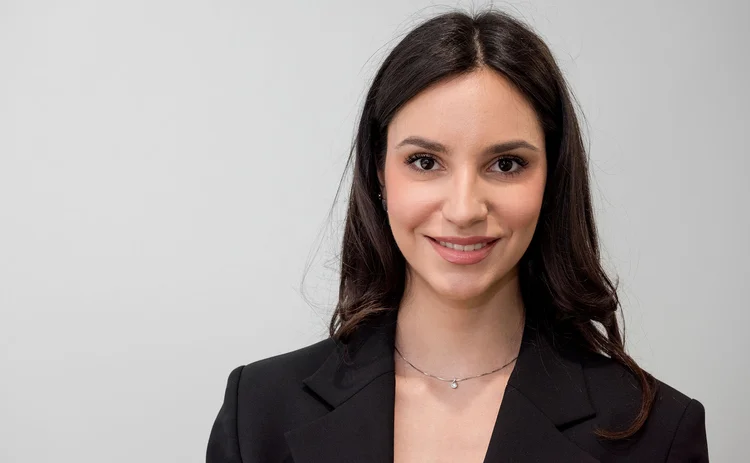
Rising star in quant finance: Milena Vuletić
Risk Awards 2025: Machine learning-based volatility model confounds sceptics

Milena Vuletić’s machine learning-based volatility model – VolGan – for which she wins this year’s rising star award, very nearly didn’t get built. At one stage in the process a coding typo meant it seemed not to be working at all. And at the project’s beginning, Vuletić’s research co-author Rama Cont, professor of mathematics at the University of Oxford and Vuletić’s PhD supervisor, was sceptical about the idea.
The project in hand was to predict next-day movements in option implied volatility surfaces, that’s to say: how prices for options with different strikes, moneyness and maturity might change. Cont’s preference was to use a factor model. The aim with such an approach would be to describe mathematically the linkages between price moves and identifiable market drivers such as underlying price dynamics, interest rates and volatility.
Vuletić, though, had worked with generative adversarial networks, or Gans, as part of her Masters thesis, also at the University of Oxford. And soon after she began her PhD she pitched Cont on using the same approach in their project to model volatility. “It was really her idea and actually I kept pushing back on it, putting obstacles in front of her to make sure it was robust,” Cont says. He describes himself as “really sceptical” at the start, telling Vuletić that he’d believe in the approach only if it could beat a simpler, classical model. “Eventually it did,” Cont says. “The credit goes to her.”
Generative adversarial networks, which were invented as recently as 2014, rely on pairs of neural networks working in tandem: a ‘generator’ model to create artificial data, and a ‘discriminator’ model to score the output on how realistic it seems.
Many will have witnessed the power of the technology in the form of deep-fake videos. But Vuletić reckoned the same approach could be used to synthesise volatility surfaces that looked real. In so doing, the model would learn the underlying dynamics of how options prices move, she believed.

In the first stages of the work on volatility, Vuletić proceeded with the factor model plan, but the thought of using a Gan stayed in her mind. And while recovering from Covid in her hometown of Trstenik, in Serbia, in the late summer of 2022, she went back to the idea. “I tend to be stubborn sometimes,” she smiles as she remembers the decision.
Vuletić returned to Oxford with a basic model and proposed including it as just one example in the paper the two were working on. Cont, impressed by the output, suggested testing the model’s ability to learn the principal components – that’s to say, the key drivers – of the volatility surface, as produced by conventional analysis.
Factor models are constructed using statistical properties of real data, which guarantees that model outputs will remain faithful to those features. A Gan, by contrast, is a ‘black box’, Vuletić explains. “We have no way of knowing what’s happening inside. So we needed to evaluate the performance super carefully.”
Penalty technique
VolGan takes in the day’s implied volatility surface and the returns of the underlying for the past two days, and outputs an implied volatility surface and returns for the day to come. The initial research used S&P options data.
Early versions of the model produced irregular volatility surfaces, Vuletić says, and Cont suggested a smoothness penalty to build into the Gan’s learning process to generate more realistic outputs. In theory the smoothing effect could be learned over time by feeding the Gan sufficient data. But the addition of the penalty in the loss function of the generator allows the model to learn more quickly.

Vuletić and Cont’s tests showed VolGan was able to accurately forecast volatility surfaces during early 2019 and in the first days of the Covid pandemic, both periods when other volatility models tend to perform poorly.
A principal component analysis, meanwhile, showed the Gan had accurately learned the underlying linkages in how options prices with different strikes, moneyness and maturities co-move. The variance explained by the first three principal components of VolGan matched the raw data to within a couple of percentage points.
Deeper hedging
The VolGan research is similar in ambition to work by former Risk.net quant of the year Hans Buehler on so-called deep hedging. In Buehler’s approach, a machine learning model trains to hedge a derivatives book, learning from iteratively simulated data over longer horizons. VolGan, though, produces day-ahead outputs that can be used directly to determine day-ahead hedge ratios without any additional model.
Buehler says the way VolGan handles the static no-arbitrage constraint – the need for the model to produce volatility surfaces that would not present clear arbitrage opportunities to market participants – is a “neat trick” and “remarkably smart”.
One experiment in the paper shows VolGan generating a hedge for a straddle trade. The model’s suggested trading, using multiple put and call options struck at different values, outperformed more conventional hedging strategies in tests.
Notably, the simulation showed VolGan hedging with higher numbers of instruments at times when markets were most erratic – five different options at the start of the Covid pandemic, for example, and four at the point of Russia’s Ukraine invasion.
VolGan has the capability to learn “something different, something that you cannot write down”, Vuletić says. The model is therefore capable of adapting better to fast-changing markets. The most obvious application for the work lies in markets such as foreign exchange, she says, where geopolitical events can lead to big and sudden dislocations. “VolGan replicates the market no matter the conditions. It’s most usable when markets are very volatile and so calibrating other models is difficult.”

Jean-Jacques Rabeyrin, co-head of global market quantitative research at BNP Paribas, which sponsors several PhD candidates at the Oxford Mathematical Institute, including Vuletić, says the work solves a problem that has lacked a clear solution for decades.
“The added value lies in the ability to dissociate the process driving the dynamics of the primary underlying from the implied volatilities. This more accurately represents reality and opens up new possibilities for the testing of trading or hedging strategies,” Rabeyrin says.
“While there are potential pitfalls, such as hedging some risks with others that may not be linked in the future, these issues also exist in classical modelling. Ultimately, this method allows for more realistic hedging setups.”
Interest from the industry has been high. Vuletić has spoken about the work already about a dozen times, at banks and hedge funds as well as industry conferences. The next step will be to add transaction costs to some of the hedging experiments carried out already, she says. Her paper with Cont that sets out the work – VolGAN: a generative model for arbitrage-free implied volatility surfaces – is forthcoming in Applied Mathematical Finance.
Vuletić will submit her PhD thesis next year, after which she says she remains undecided about whether she will pursue a career in industry or in academia.
Only users who have a paid subscription or are part of a corporate subscription are able to print or copy content.
To access these options, along with all other subscription benefits, please contact info@risk.net or view our subscription options here: http://subscriptions.risk.net/subscribe
You are currently unable to print this content. Please contact info@risk.net to find out more.
You are currently unable to copy this content. Please contact info@risk.net to find out more.
Copyright Infopro Digital Limited. All rights reserved.
As outlined in our terms and conditions, https://www.infopro-digital.com/terms-and-conditions/subscriptions/ (point 2.4), printing is limited to a single copy.
If you would like to purchase additional rights please email info@risk.net
Copyright Infopro Digital Limited. All rights reserved.
You may share this content using our article tools. As outlined in our terms and conditions, https://www.infopro-digital.com/terms-and-conditions/subscriptions/ (clause 2.4), an Authorised User may only make one copy of the materials for their own personal use. You must also comply with the restrictions in clause 2.5.
If you would like to purchase additional rights please email info@risk.net
More on Awards
Market liquidity risk product of the year: Bloomberg
Bringing clarity and defensibility to liquidity risk in a fragmented fixed income market
FRTB (SA) product of the year: Bloomberg
A globally consistent and reliable regulatory standardised approach for FRTB
Best use of cloud: ActiveViam
Redefining high-performance risk analytics in the cloud
Best use of machine learning/AI: ActiveViam
Bringing machine intelligence to real-time risk analytics
Collateral management and optimisation product of the year: CloudMargin
Delivering the modern blueprint for enterprise collateral resilience
Flow market-maker of the year: Citadel Securities
Risk Awards 2026: No financing; no long-dated swaps? “No distractions,” says Esposito
Pricing and analytics: fixed income – Quantifi
Quantifi delivers high-performance, transparent and adaptable pricing and risk analytics for fixed income and credit markets
Derivatives house of the year: Citi
Risk Awards 2026: Rev up, RWAs down, as US bank gets back on track (with added XiNG and XiP)







